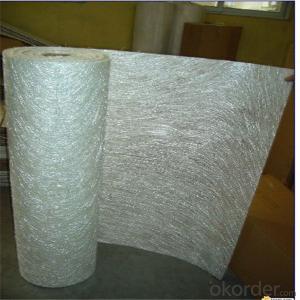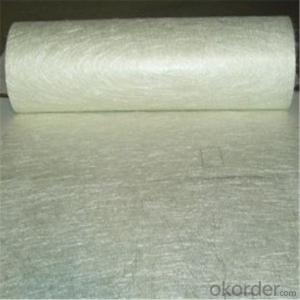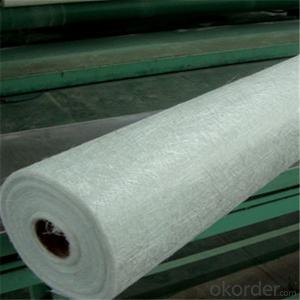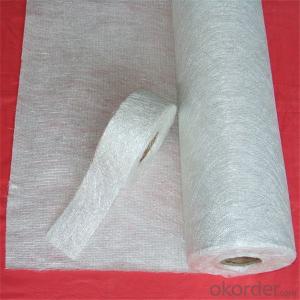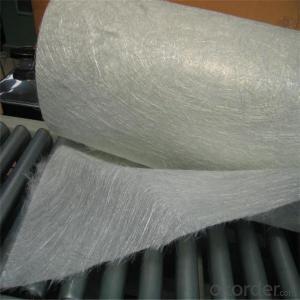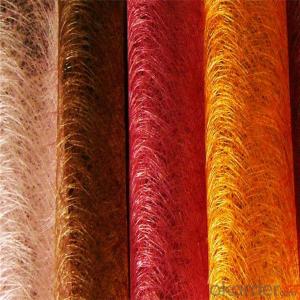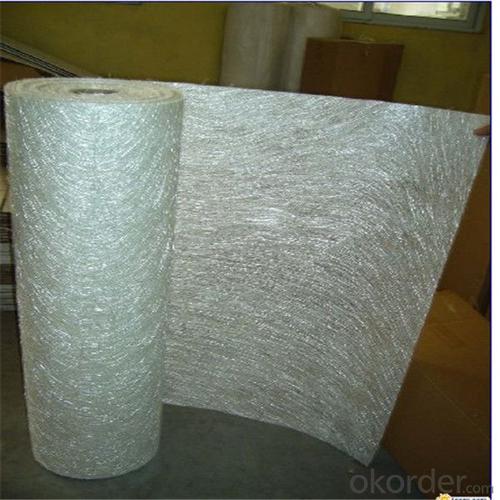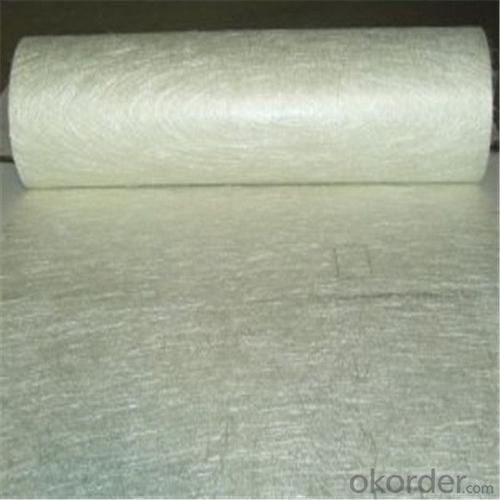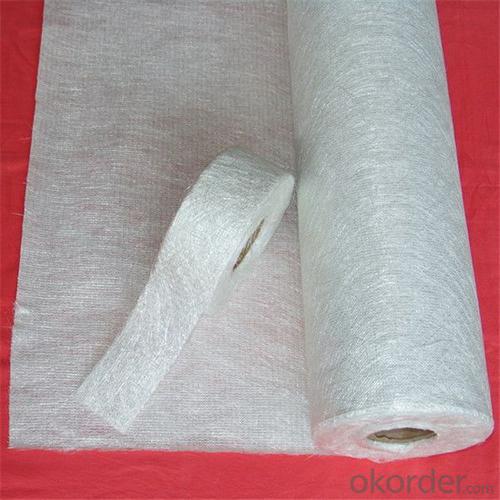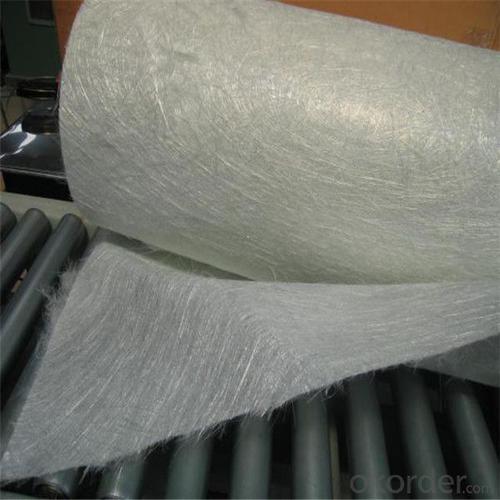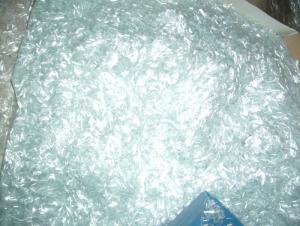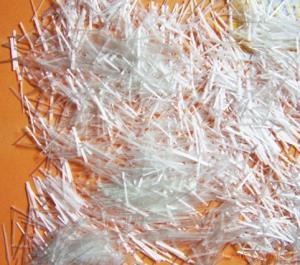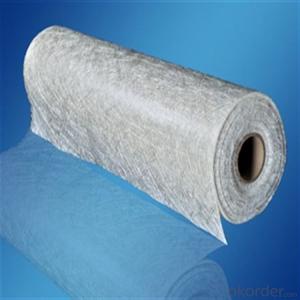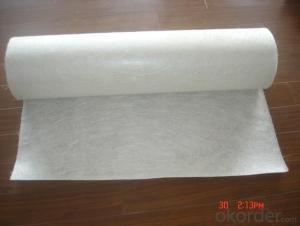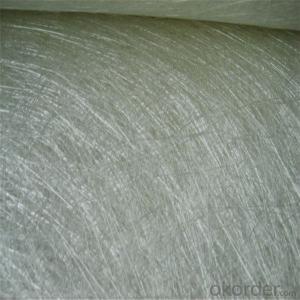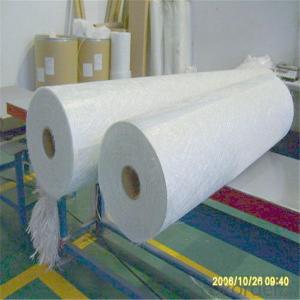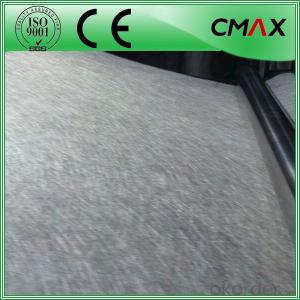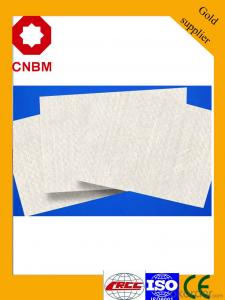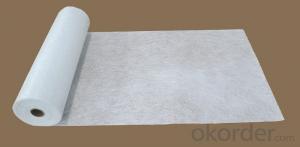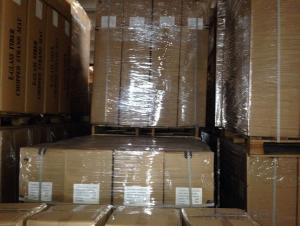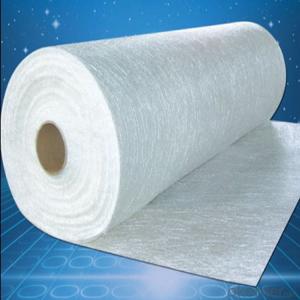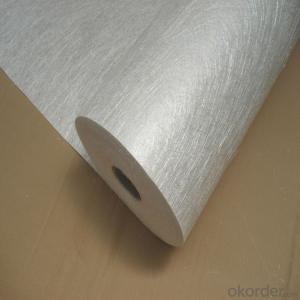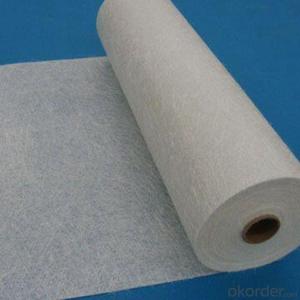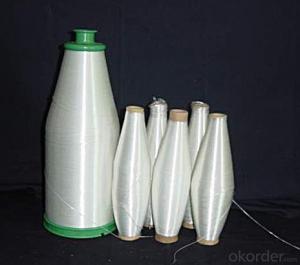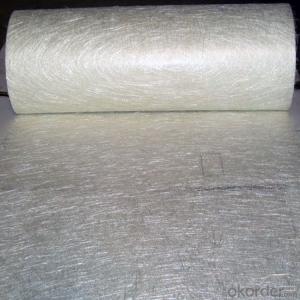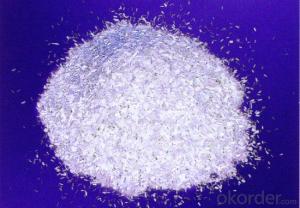Ctg Brand Fiberglass Chop Strand Mat Emulsion Binder Chopped Sand Mat in China
- Loading Port:
- Tianjin
- Payment Terms:
- TT OR LC
- Min Order Qty:
- 100 m.t.
- Supply Capability:
- 20000 m.t./month
OKorder Service Pledge
OKorder Financial Service
You Might Also Like
Quick Details
| Technique: | Chopped Strand Fiberglass Mat (CSM) | Dimensions: | according to customer's request | Mat Type: | Stitch Bonding Chop Mat |
| Fiberglass Type: | E-Glass | Softness: | middle | Place of Origin: | Jiangxi, China (Mainland) |
| Brand Name: | cnbm | Model Number: | CSMEP100,CSMEP120,CSMEP200,etc | Product: | Cooling Tower Building Glass Fiber Fiberglass Chopped Strand Mat(csm) |
| Color: | White | Width: | 1040mm,1250mm,ect. | Area weight: | 225-900g/m2 |
| Application: | filament winding,panpel,ect |
Packaging & Delivery
| Packaging Details: | Each roll in one polybag then to an export carton. |
| Delivery Detail: | Within 18 days after confirm order |
Fiberglass Chopped strand mat
Powder Strand Mats Product Features:
1) Uniform density ensures consistent fiberglass content and mechanical properties of the composites products.
2)Uniform powder distribution ensures good mat integrity, little loose fibers and small roll diameter.
3) Excellent flexibility ensures good mold ability with no spring back at sharp angles.
4)Fast and consistent wet-out speed in resins and rapid air lease reduce resin consumption and production cost and enhances productivity and mechanical properties of the end products.
5)The composite products have high dry and wet tensile strength and good transparency.
Picture
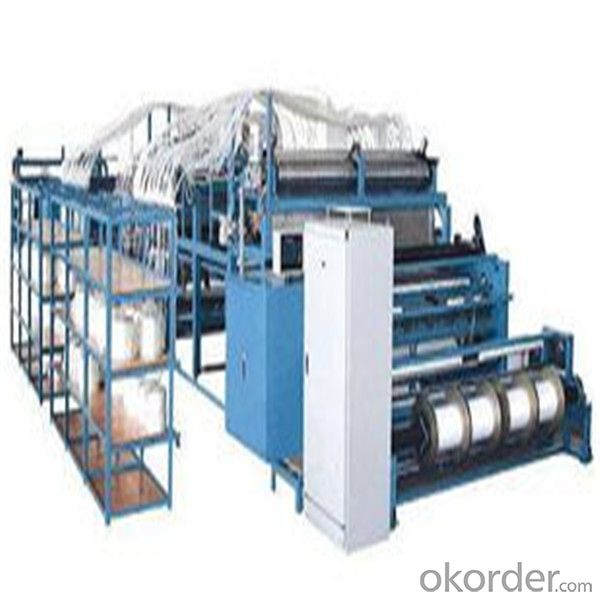
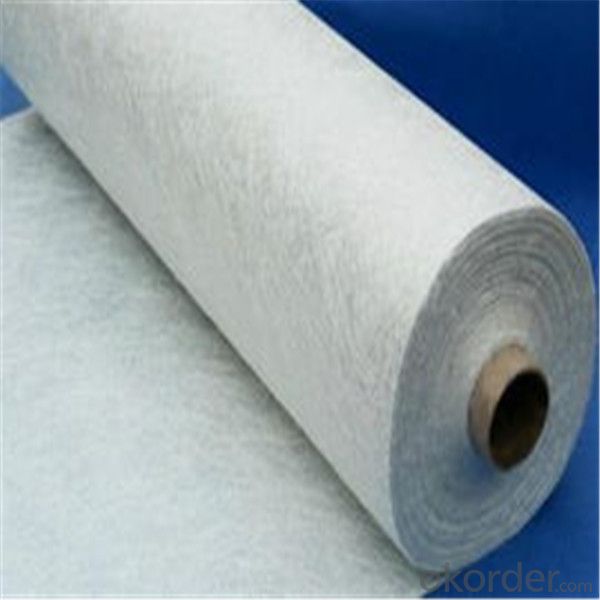
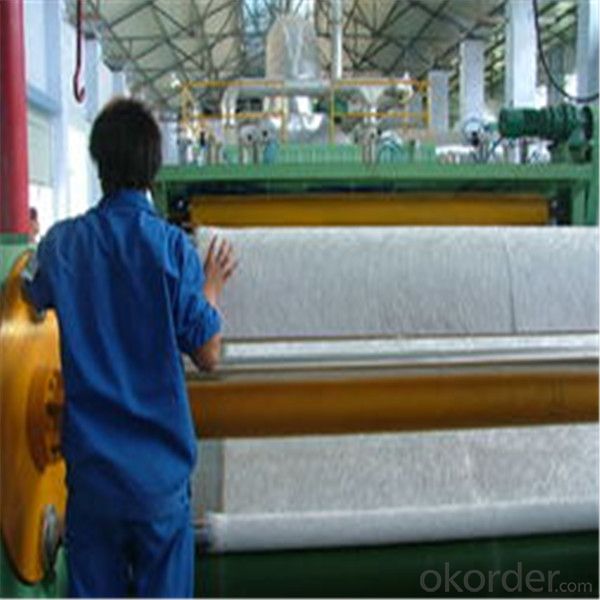
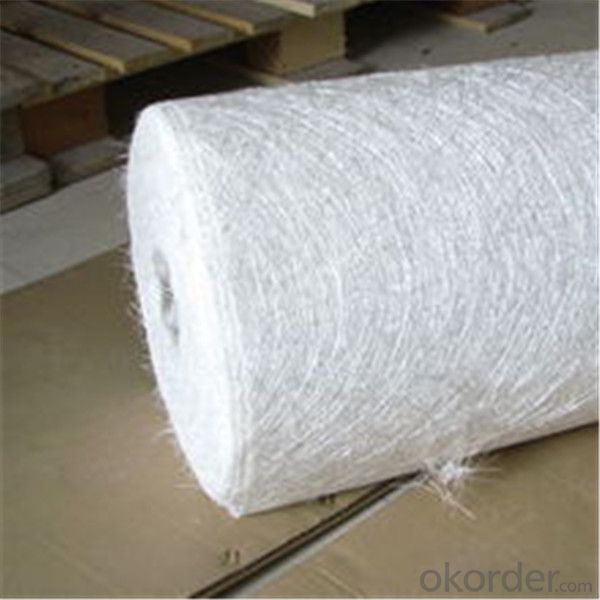
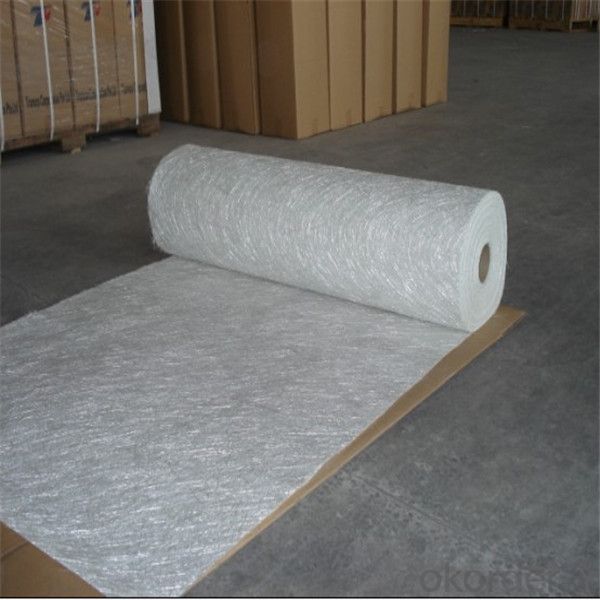
- Q: Can fiberglass chopped strand be used in insulation materials?
- Yes, fiberglass chopped strand can be used in insulation materials. Fiberglass chopped strand is commonly used as a reinforcement material in insulation applications. The chopped strands are typically mixed with other materials, such as binders and fillers, to create insulation products like fiberglass batts or blankets. The chopped strands help to improve the overall strength, durability, and thermal performance of the insulation material. Additionally, fiberglass chopped strand insulation is known for its excellent fire resistance properties, making it a popular choice for insulating residential and commercial buildings.
- Q: Does fiberglass chopped strand improve the fatigue resistance of composite materials?
- Yes, fiberglass chopped strand can improve the fatigue resistance of composite materials. The use of chopped strands helps to distribute stress and reinforce the composite matrix, enhancing its ability to withstand cyclic loading and reducing the likelihood of material failure due to fatigue.
- Q: Is fiberglass chopped strand suitable for electrical enclosures?
- Yes, fiberglass chopped strand is suitable for electrical enclosures. Fiberglass is known for its excellent insulation properties and is commonly used in the electrical industry for a variety of applications. It provides good electrical insulation, high mechanical strength, and resistance to corrosion and chemicals. Furthermore, fiberglass is lightweight and non-conductive, making it an ideal material for electrical enclosures that require protection and insulation for electrical components.
- Q: What are the typical quality control measures for fiberglass chopped strand composites?
- To ensure the integrity and consistency of fiberglass chopped strand composites, various typical quality control measures are commonly employed: 1. Raw Material Inspection: The initial step involves inspecting the raw materials used in production. This includes assessing the quality and specifications of the glass fibers, resins, and additives to ensure they meet the required standards. 2. Process Control: Throughout the manufacturing process, quality control measures monitor and control parameters like temperature, pressure, and resin-to-fiber ratio. This ensures consistency and conformity to specifications. 3. Fiber Length and Distribution: The mechanical properties of the composite are influenced by the length and distribution of the chopped fibers. Quality control measures are used to measure and monitor these aspects, ensuring adherence to specified requirements. 4. Composite Thickness and Density: The performance of fiberglass chopped strand composites is impacted by their thickness and density. Quality control measures are implemented to measure and monitor these factors, ensuring compliance with required standards. 5. Mechanical Testing: Various mechanical tests evaluate the strength, stiffness, and other properties of the composites. These tests include tensile strength, flexural strength, impact resistance, and fatigue testing. Quality control measures ensure accurate and consistent testing. 6. Visual Inspection: Trained inspectors visually examine the composites for defects such as voids, delamination, or surface imperfections. This quality control measure ensures compliance with cosmetic standards. 7. Dimensional Control: Quality control measures are used to measure and monitor dimensions such as length, width, and thickness, ensuring they fall within specified tolerances. 8. Packaging and Labeling: Quality control measures extend to packaging and labeling. Inspections are conducted to ensure intact packaging that protects the composites during transportation, and accurate labeling that reflects product specifications. By implementing these quality control measures, manufacturers can deliver high-quality fiberglass chopped strand composites that meet standards for strength, durability, dimensional accuracy, and appearance. This helps maintain their reputation in the market and satisfies customer expectations.
- Q: What are the typical end-use industries for fiberglass chopped strand composites?
- The typical end-use industries for fiberglass chopped strand composites include automotive, aerospace, construction, marine, wind energy, and electrical applications.
- Q: Can fiberglass chopped strand be used for reinforcing ceramic matrix composites?
- Fiberglass chopped strand is not suitable for reinforcing ceramic matrix composites. These composites need materials that can withstand high temperatures and offer exceptional mechanical properties in elevated temperatures. However, fiberglass may lack the required thermal stability to endure the extreme temperatures necessary for ceramic matrix composites. Moreover, the thermal expansion coefficients of fiberglass and ceramics often differ significantly, resulting in poor compatibility and potential composite failure. Consequently, alternative fibers such as carbon fibers or silicon carbide fibers, which are known for their high-temperature resistance, are commonly employed for reinforcing ceramic matrix composites.
- Q: Can fiberglass chopped strand be used in the production of pipes and tanks?
- Yes, fiberglass chopped strand can be used in the production of pipes and tanks. It is commonly used as a reinforcement material in composite manufacturing processes to enhance the strength and durability of pipes and tanks.
- Q: Does fiberglass chopped strand have any fungal resistance?
- Yes, fiberglass chopped strand does have some level of fungal resistance. The inorganic nature of fiberglass makes it less susceptible to fungal growth compared to organic materials. However, it is still important to note that prolonged exposure to high moisture or humid conditions can potentially promote fungal growth on the surface of fiberglass. Regular cleaning and maintenance are necessary to ensure the longevity and fungal resistance of fiberglass chopped strand.
- Q: Can fiberglass chopped strand be used in the production of construction panels?
- Yes, fiberglass chopped strand can be used in the production of construction panels. Fiberglass chopped strand is a type of reinforcement material made from short lengths (strands) of glass fibers that are randomly oriented and bound together with a binder. These strands can be mixed with various resins, such as polyester or epoxy, to create a composite material that is strong, lightweight, and resistant to various environmental factors. In the production of construction panels, fiberglass chopped strand can be used as a reinforcement material to enhance the structural integrity and durability of the panels. The strands are typically added to the resin mixture and then molded into the desired shape, such as flat panels, sheets, or panels with specific profiles. The addition of fiberglass chopped strand helps to improve the strength and stiffness of the construction panels, making them more resistant to bending and cracking. It also provides better impact resistance and dimensional stability, ensuring that the panels can withstand various loads and environmental conditions. Furthermore, fiberglass chopped strand can also enhance the fire resistance and thermal insulation properties of the construction panels. The glass fibers in the chopped strand act as a barrier against heat transfer, reducing the risk of fire spreading and improving energy efficiency. Overall, the use of fiberglass chopped strand in the production of construction panels offers numerous benefits, including increased strength, durability, fire resistance, and thermal insulation. Hence, it is a suitable material choice for manufacturing construction panels.
- Q: What are the typical weight percentages of fiberglass chopped strand used in composites?
- The typical weight percentages of fiberglass chopped strand used in composites can vary depending on the specific application and desired properties. However, it is common for the weight percentage of fiberglass chopped strand to range from 10% to 50% in composite materials.
Send your message to us
Ctg Brand Fiberglass Chop Strand Mat Emulsion Binder Chopped Sand Mat in China
- Loading Port:
- Tianjin
- Payment Terms:
- TT OR LC
- Min Order Qty:
- 100 m.t.
- Supply Capability:
- 20000 m.t./month
OKorder Service Pledge
OKorder Financial Service
Similar products
Hot products
Hot Searches
Related keywords
